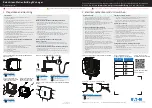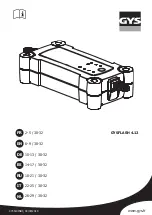
Things to remember when driving
104
Things to remember when driving
Break-in procedures
To ensure that your vehicle continues to
provide optimized economy of operation
throughout an extended service life, we
request that you devote careful attention to
the following section.
Engine and differential
Up to 1,200 miles/2,000 km:
You should attempt to vary both vehicle
and engine speeds. Until the break-in
period has been completed, you should
also refrain from exceeding an engine
speed of 4,500 rpm or a driving speed of
100 mph/160 km/h.
Always obey all official speed limits.
Avoid full-throttle operation and use of the
transmission's kickdown mode during
these initial miles.
Once you have driven 1,200 miles/
2,000 km, the engine and vehicle speeds
can be gradually increased.
SMG Sequential manual
transmission
Do not use the acceleration assistant dur-
ing the break-in period, refer to page
.
Tires
Due to technical factors associated with
their manufacture, tires do not achieve their
full traction potential until after an initial
break-in period. Therefore, drive reservedly
during the first 200 miles/300 km.
Brake system
Brakes require an initial break-in period of
approx. 300 miles/500 km to achieve opti-
mized contact and wear patterns between
brake pads and rotors.
Clutch
The function of the clutch is only at its opti-
mized level after a distance driven of
approx. 300 miles/500 km. During this
break-in period, engage the clutch gently.
Following part replacement
Observe the break-in instructions again if
components previously addressed must be
replaced during driving later.
General driving notes
Hot exhaust system
Extreme temperatures occur at the
catalytic converter on this and every
catalyst-equipped vehicle. Do not remove
the heat shields installed adjacent to vari-
ous sections of the exhaust system, and
never apply undercoating to them. When
driving, standing at idle and while parking
take care to avoid possible contact
between the hot exhaust system and any
highly flammable materials such as hay,
leaves, grass, etc. Such contact could lead
to a fire, and with it the risk of serious prop-
erty damage as well as personal injury.
<
Parking vehicle
Condensation forms in the air conditioner
system during operation, and then exits
under the vehicle. Traces of condensed
water under the vehicle are thus normal.
Before driving into a car wash
To prevent the exterior mirrors on this vehi-
cle from being damaged, always fold them
in by hand before entering an automatic car
wash.
Hydroplaning
When driving on wet or slushy roads,
reduce road speed. If you do not, a
wedge of water can form between tires and
road surface. This phenomenon is referred
to as hydroplaning, and is characterized by
a partial or complete loss of contact
Online Edition for Part No. 01 41 0 158 159 - © 02/04 BMW AG
Summary of Contents for 525I SEDAN
Page 2: ...Online Edition for Part No 01 41 0 158 159 02 04 BMW AG...
Page 10: ...Online Edition for Part No 01 41 0 158 159 02 04 BMW AG...
Page 26: ...Online Edition for Part No 01 41 0 158 159 02 04 BMW AG...
Page 104: ...Online Edition for Part No 01 41 0 158 159 02 04 BMW AG...
Page 110: ...Online Edition for Part No 01 41 0 158 159 02 04 BMW AG...
Page 128: ...Online Edition for Part No 01 41 0 158 159 02 04 BMW AG...
Page 146: ...Online Edition for Part No 01 41 0 158 159 02 04 BMW AG...
Page 164: ...Online Edition for Part No 01 41 0 158 159 02 04 BMW AG...
Page 196: ...Online Edition for Part No 01 41 0 158 159 02 04 BMW AG...
Page 223: ...5 US En...
















































